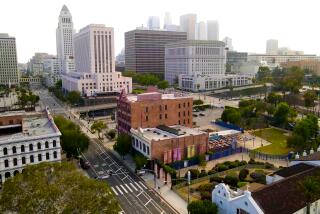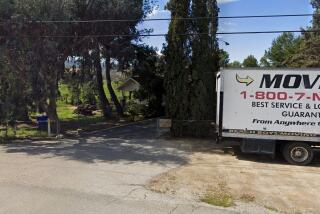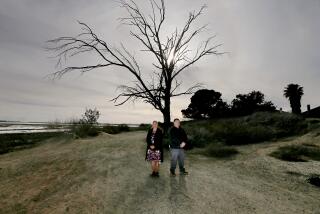Arco Finds Human Skeletal Remains; Descendants Sought
- Share via
State officials are facing the daunting task of trying to locate the living descendants of several prehistoric skeletal remains found at the Arco oil refinery in Carson, officials said Friday.
Workers stumbled across the brown, brittle bones and a skull with the teeth intact Thursday while draining water from a 60-foot-by-60-foot trench, said Arco spokesman Walter Neil.
The water caused the sides of the 4-foot-deep trench to slough off, exposing the remains, he said.
A forensic expert from the Los Angeles County coroner’s office determined that the bones were over 1,000 years old and appeared to belong to five humans, Neil said.
A spokesman from the coroner’s office said that the site appeared to be a Native American burial ground. Neil said Arco will leave the remains at the site for the immediate future. The company will hire an archeologist to help determine if the site is an Indian burial ground and if there are more bodies there, Neil said.
Under state law, when indigenous remains are found at a construction site, the property owner must stop work and notify the Native American Heritage Commission, an agency that compiles data on the Indian tribes in California.
The commission attempts to track down the most likely descendants, said Gail McNulty, an associate program analyst with the agency.
Many Native Americans across the state can trace their ancestors to specific geographic areas, McNulty said.
The descendant then has 24 hours to contact the property owner with any information about how to dispose of the remains, McNulty said.
If the commission fails to locate a probable descendant, the remains are usually reburied in another location at the property owner’s expense, she said.
An anthropology professor at Cal State Northridge said the bones probably belong to Gabrielino Indians. “We know what the tribal affiliations were to some extent at the time of Spanish contact, based on records that the Spanish left behind and on research by anthropologists,” Mark Raab said.
There were about 5,000 to 10,000 Gabrielinos living in what are now the counties of Los Angeles and Orange when the Spaniards arrived in the late 1700s.
More to Read
Sign up for Essential California
The most important California stories and recommendations in your inbox every morning.
You may occasionally receive promotional content from the Los Angeles Times.













